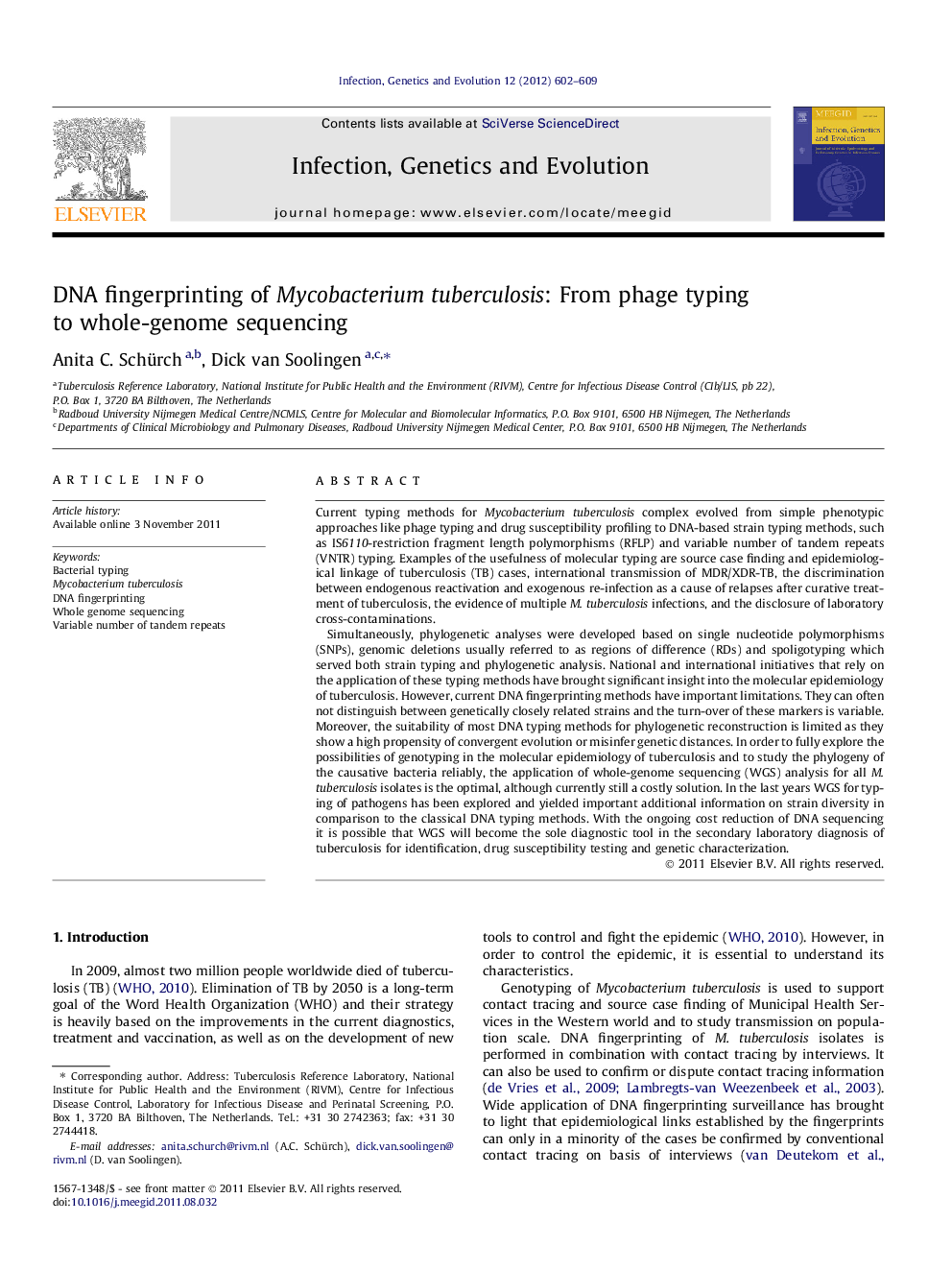| کد مقاله | کد نشریه | سال انتشار | مقاله انگلیسی | نسخه تمام متن |
|---|---|---|---|---|
| 5910415 | 1161353 | 2012 | 8 صفحه PDF | دانلود رایگان |

Current typing methods for Mycobacterium tuberculosis complex evolved from simple phenotypic approaches like phage typing and drug susceptibility profiling to DNA-based strain typing methods, such as IS6110-restriction fragment length polymorphisms (RFLP) and variable number of tandem repeats (VNTR) typing. Examples of the usefulness of molecular typing are source case finding and epidemiological linkage of tuberculosis (TB) cases, international transmission of MDR/XDR-TB, the discrimination between endogenous reactivation and exogenous re-infection as a cause of relapses after curative treatment of tuberculosis, the evidence of multiple M. tuberculosis infections, and the disclosure of laboratory cross-contaminations.Simultaneously, phylogenetic analyses were developed based on single nucleotide polymorphisms (SNPs), genomic deletions usually referred to as regions of difference (RDs) and spoligotyping which served both strain typing and phylogenetic analysis. National and international initiatives that rely on the application of these typing methods have brought significant insight into the molecular epidemiology of tuberculosis. However, current DNA fingerprinting methods have important limitations. They can often not distinguish between genetically closely related strains and the turn-over of these markers is variable. Moreover, the suitability of most DNA typing methods for phylogenetic reconstruction is limited as they show a high propensity of convergent evolution or misinfer genetic distances. In order to fully explore the possibilities of genotyping in the molecular epidemiology of tuberculosis and to study the phylogeny of the causative bacteria reliably, the application of whole-genome sequencing (WGS) analysis for all M. tuberculosis isolates is the optimal, although currently still a costly solution. In the last years WGS for typing of pathogens has been explored and yielded important additional information on strain diversity in comparison to the classical DNA typing methods. With the ongoing cost reduction of DNA sequencing it is possible that WGS will become the sole diagnostic tool in the secondary laboratory diagnosis of tuberculosis for identification, drug susceptibility testing and genetic characterization.
Journal: Infection, Genetics and Evolution - Volume 12, Issue 4, June 2012, Pages 602-609